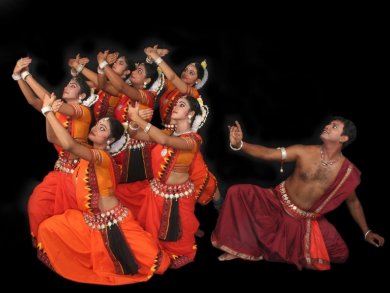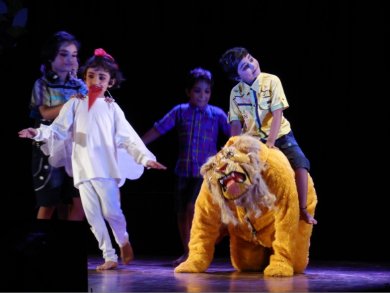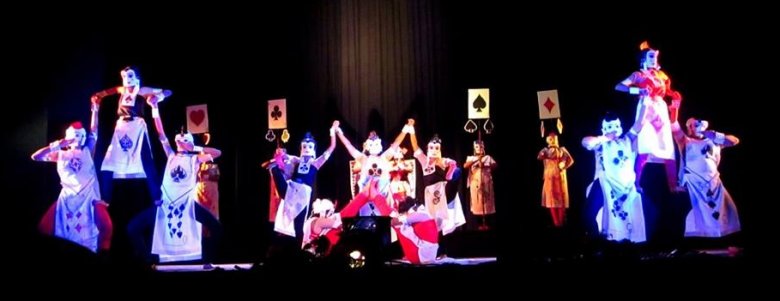
|   |

|   |
Khela Bhangar Khela - Nita Vidyarthi e-mail: nitavidyarthi@gmail.com Photo Courtesy: Garden Reach Nippon Nritya Bitan August 4, 2015 That seasoned Odissi dancer Krishnendu Roy is also a sincere teacher and choreographer was evident in the program entitled ‘Khela Bhangar Khela’ by the students of his institution Garden Reach Nikkon Nritya Bitan at Rabindra Sadan, Kolkata. The power and impact of dance was showcased through offerings of two pure classical Odissi dance numbers and two well-designed dance dramas conceived by the city based dancer who has trained under Sharmila Biswas  Odissi  Hingshutey Daityo The evening opened with the traditional invocation Ganesh Tandava composed by Guru Debaprasad Das and choreographed by Krishnendu Roy in talamalika. Appropriately, Ganesh Vandana, “Ekadantam Mahakayaam Lambodaram Gajananam” the joyous dance of Ganesha described the glory through charis and bhramaris adorned with sthanakas and crisp bhangis, with the paasam (noose), ankush (goad) and modak (laddoo) in his three hands while the lower right hand was open in the ‘varada mudra’ which is an upright hand gesture carrying a blessing to the universe. The well choreographed piece saw some neat formations and good dancing but one missed the characteristic shabda and pata of Guru Debaprasad Das. Shringar Pallavi in raga Mohana composed by Poushali Mukherjee and choreographed by Roy was gratifying nritta where intricate patterns of rhythm and dancing complemented each other with the sound and beats of the mardala. The calibre and maturity of Roy could not be ignored in this rendition. His imagination and dedicated effort were evident in the dance dramas ‘Hingshutey Daityo’ adapted from Oscar Wilde’s Selfish Giant by the youngest members of the institution and Tagore’s popular ‘Tasher Desh’(House of Cards) inspired by Lewis Carroll’s Alice in Wonderland. Roy must be appreciated for the venture, but experiments are partly good and partly not working. While ‘Hingshutey Daityo’ was a straightforward enjoyable attempt especially for the playful dancing of the children, the theme in Tasher Desh could have been tightened a bit with slightly thoughtful amalgamation with Alice in Wonderland. Tasher Desh represented the nation in imagination where the metaphor in this production focuses on the ‘colonial rule as an artificial barrier to the development and progress of the country as well as distinction in castes and class,’ but more stress on the rule-breaking and rigidity of regulations could have been a better enjoyable option for the audience in the nearly full auditorium.  Tasher Desh However, Roy has effectively used the basic steps of Odissi like the chauka and tribhangi for displaying the rigidity of movements of the cards in a land where only the Prince and his friend (Saudagar) are human beings to make the theme impressive. The choreography and music in the movements of the cards were a pleasure to watch. Finally, the tearing off of the masks and discarding them as a celebration and an ultimate symbolic gesture of rule-breaking added to the dramatic component of the production. The costumes of the cards could have been brighter for better appeal. Challenges are necessary and Krishnendu Roy tries his best to meet it. Dr. Nita Vidyarthi is a critic of performing arts, specialising in dance, dance theatre and expressions and is a regular contributor to The Hindu, and the Statesman Kolkata in dance, vocal music and theatre. She is trained in Kathak, Bharatanatyam and Manipuri as well as vocal, semi-classical music and Rabindra Sangeet. A Science communicator, Ph.D. in Polymer Science, Commonwealth Scholar and a retired Professor of Chemistry, Nita devotes most of her time to dance and theatre writing. |